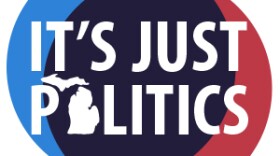Stanley Greenberg wants to know what makes the white, working class voters of Macomb County tick.
In 1985, the long-time Democratic pollster and strategist did a now-classic study of "Reagan Democrats" -- the white voters, mostly auto workers, who went for John Kennedy by 63% in 1960 and then Ronald Reagan by 66% in 1984.
Stan Greenberg is still studying those Macomb County voters: the ones who twice voted for Barack Obama, but then gave Donald Trump a win. He studied them in early 2017, and then he went back this past March to hold more focus groups to see what else he could learn from the "Obama-Trump voters."
“Obviously if you look at what happened in the 2016 election, you can see that they gave Donald Trump his margin in Michigan,” he says. “They actually feel betrayed by the Democrats, they don’t like the Republicans very much, they don’t like these NAFTA trade deals, and other things that have hurt working people, and outsourcing. They have reasons why they are holding these views.”
One year into the Trump presidency, Greenberg says most Macomb voters still feel confident in their vote, although white women are slightly more apprehensive than white men.
“What they’re most conflicted about is whether he is delivering for working people,” he says. “And they’re upset about healthcare costs. Healthcare, you know, is particularly powerful and important.… What they didn’t want was changes that were gonna spike up healthcare costs, which is what’s happening right now, and so they’re very upset about that.”
Greenberg also cites proposed cuts to social security, Medicare, and Medicaid as reason for the voters’ slight apprehension.
In a memo released earlier this month detailing the focus groups, Greenberg and his co-author Nancy Zdunkewicz highlighted a hyperawareness on both sides of the political spectrum of the divisiveness that currently defines American politics and culture.
Both sides spoke of a virtual civil war using much the same language to talk about their worries.
“People are very conscious of how divided we are, how much conflict there is in the country, that has been produced by this election,” says Greenberg.
More from the memo summarizing the study:
Voters across ‘the resistance’ and ‘Trump world’ use the same language to describe their feelings about the way things are going in the country. They are “terrified,” “nervous,” “depressed,” and “distraught” because of the political climate, and that is compounded by their fear of gun violence.






